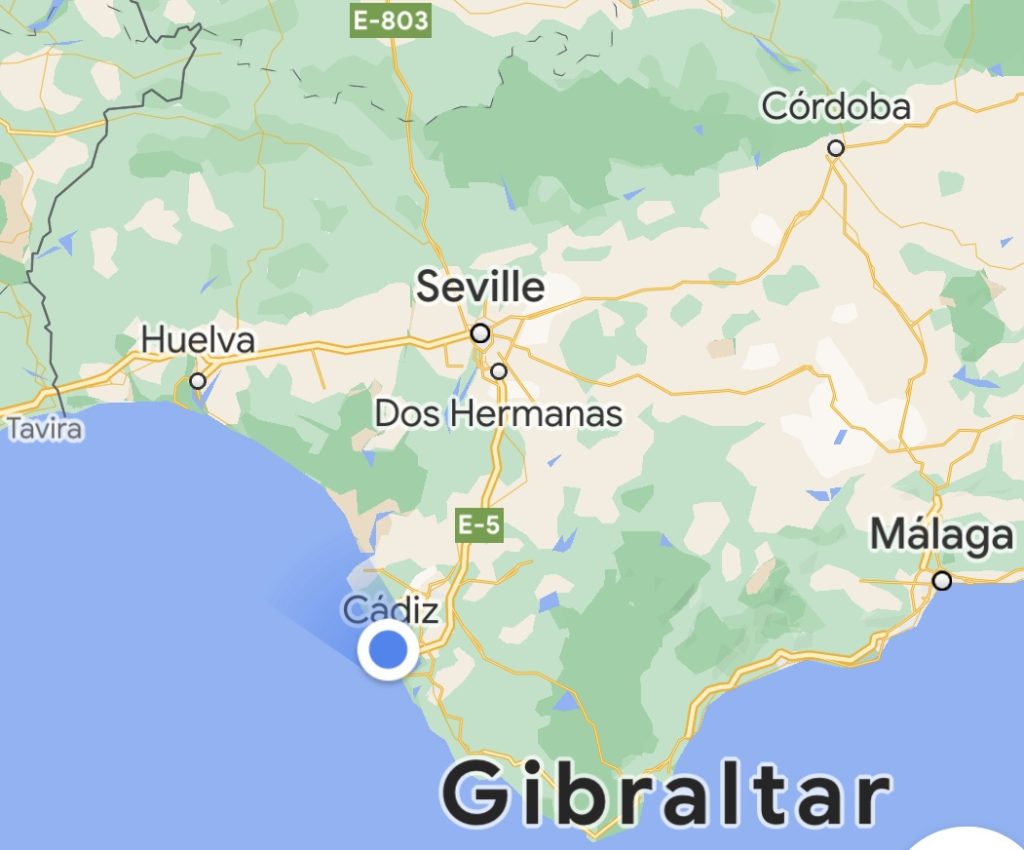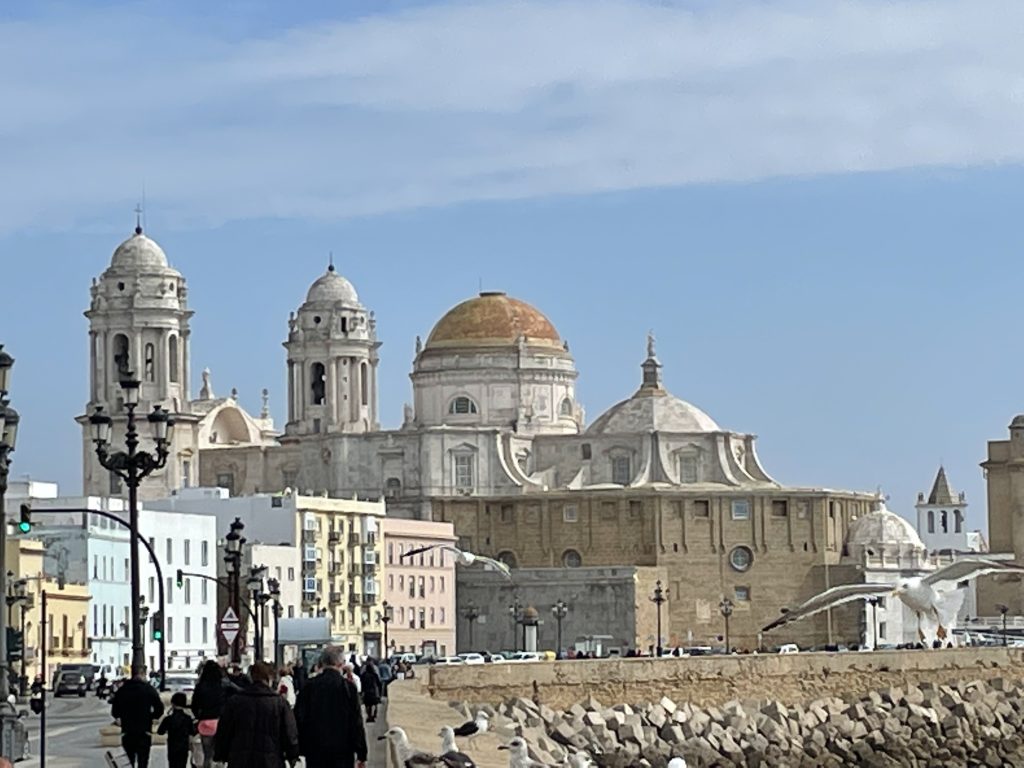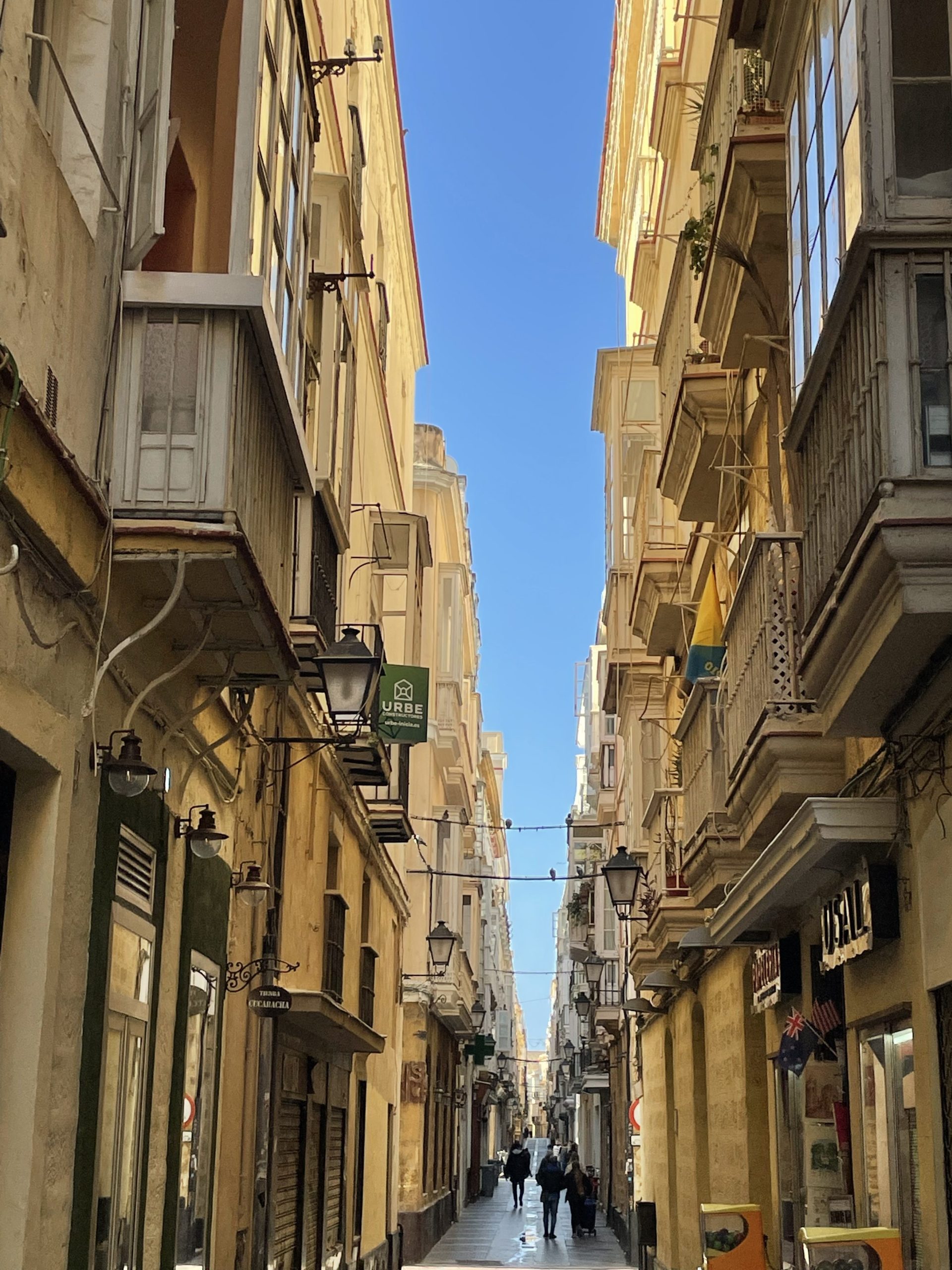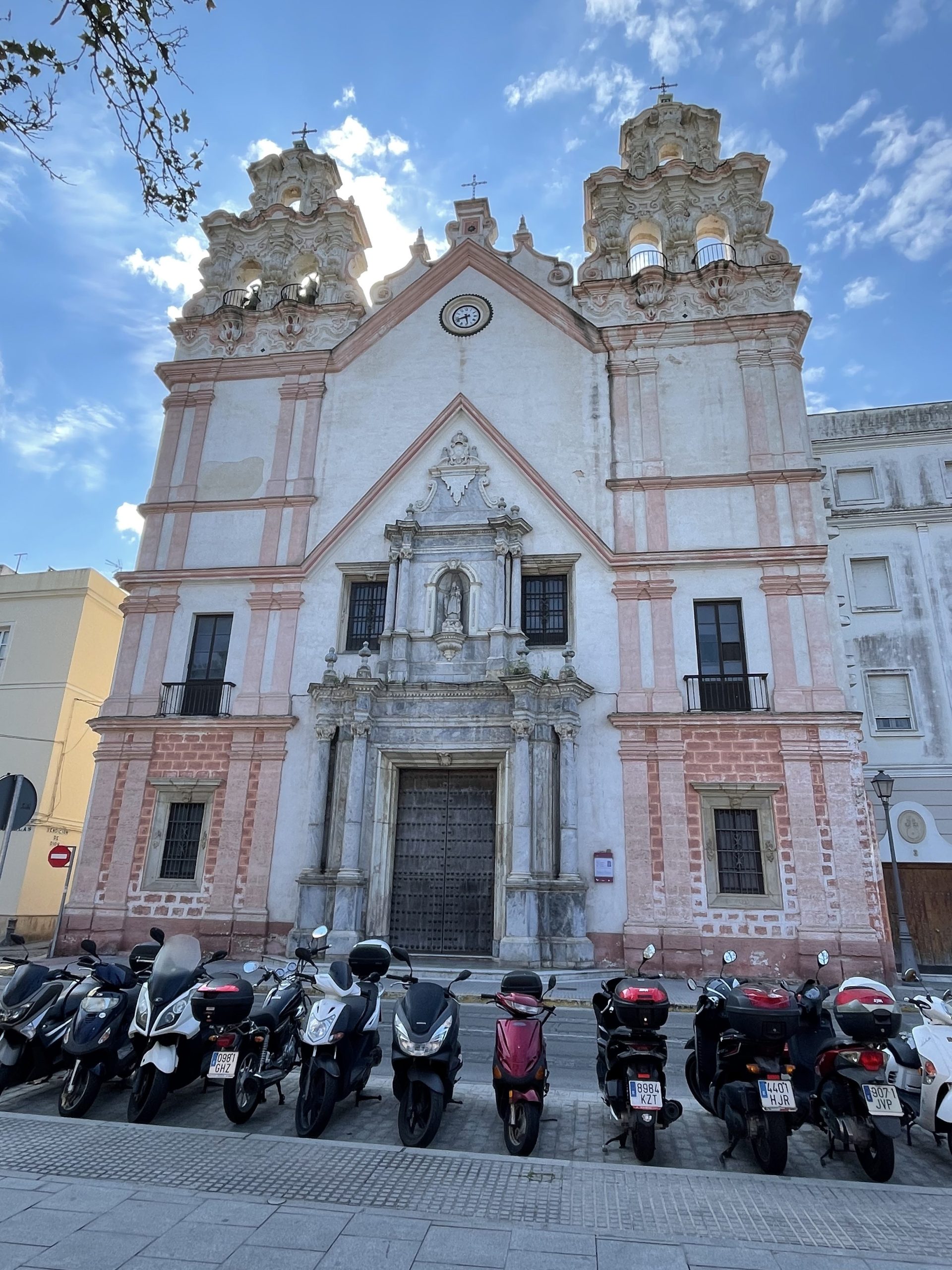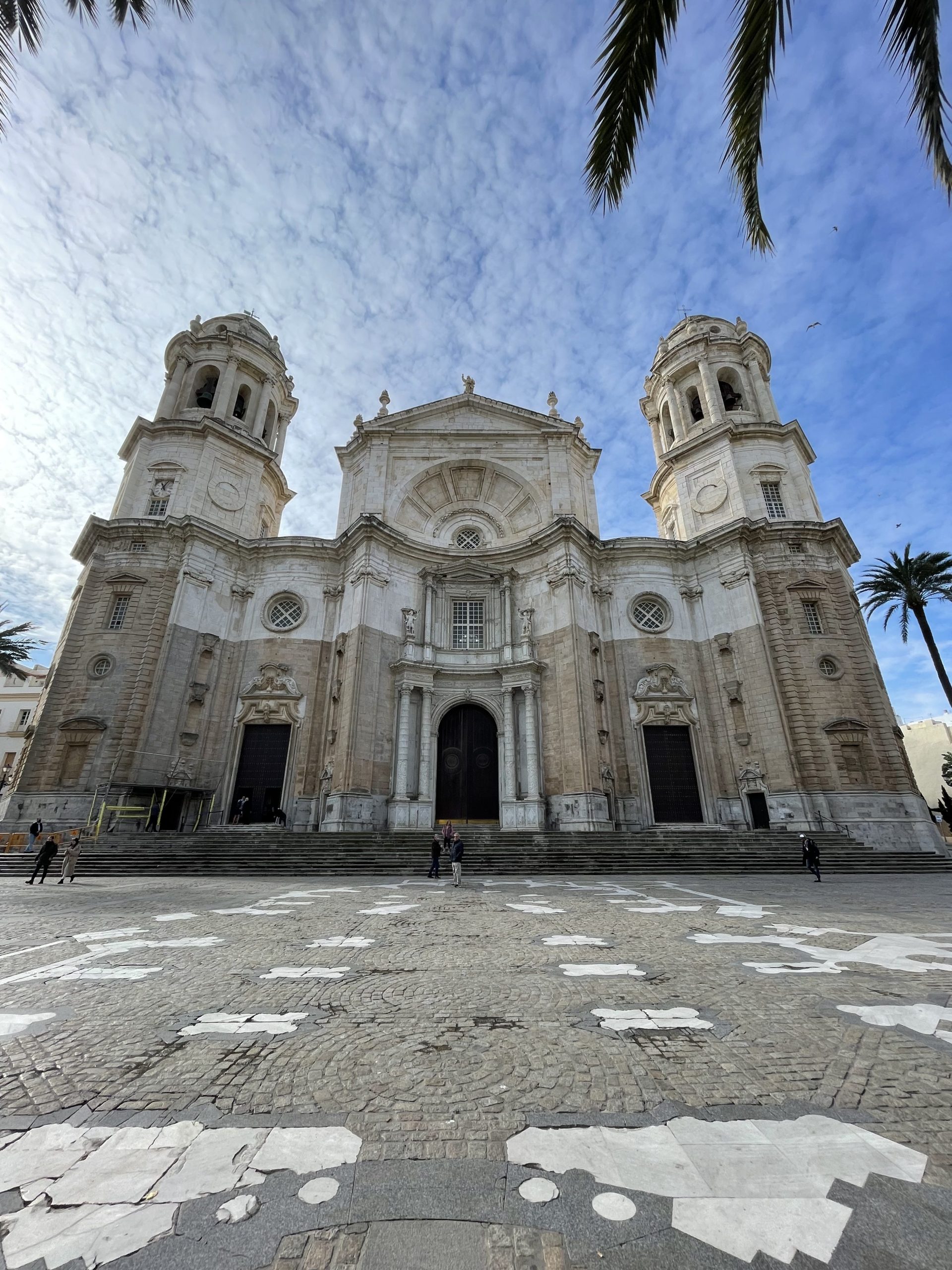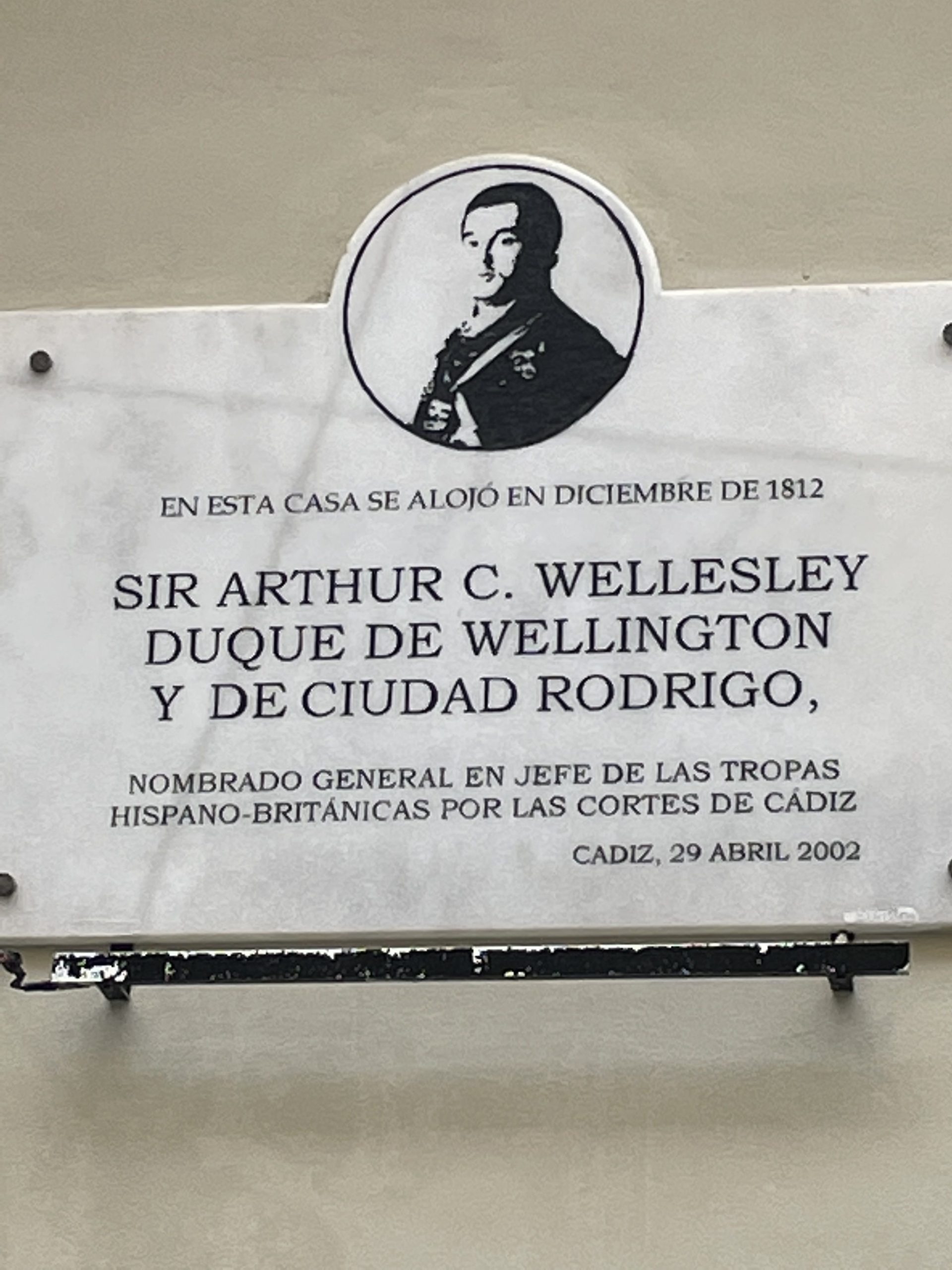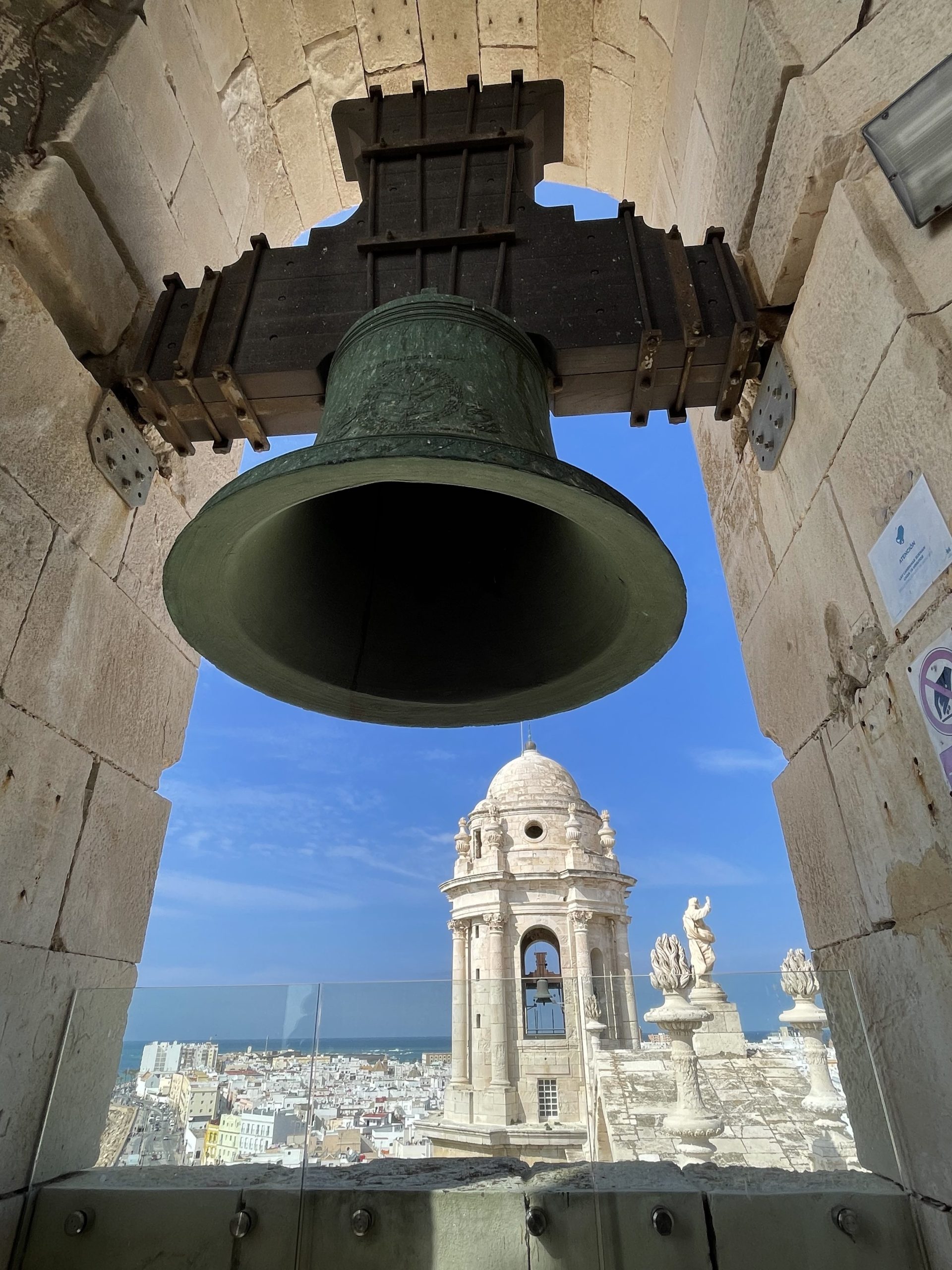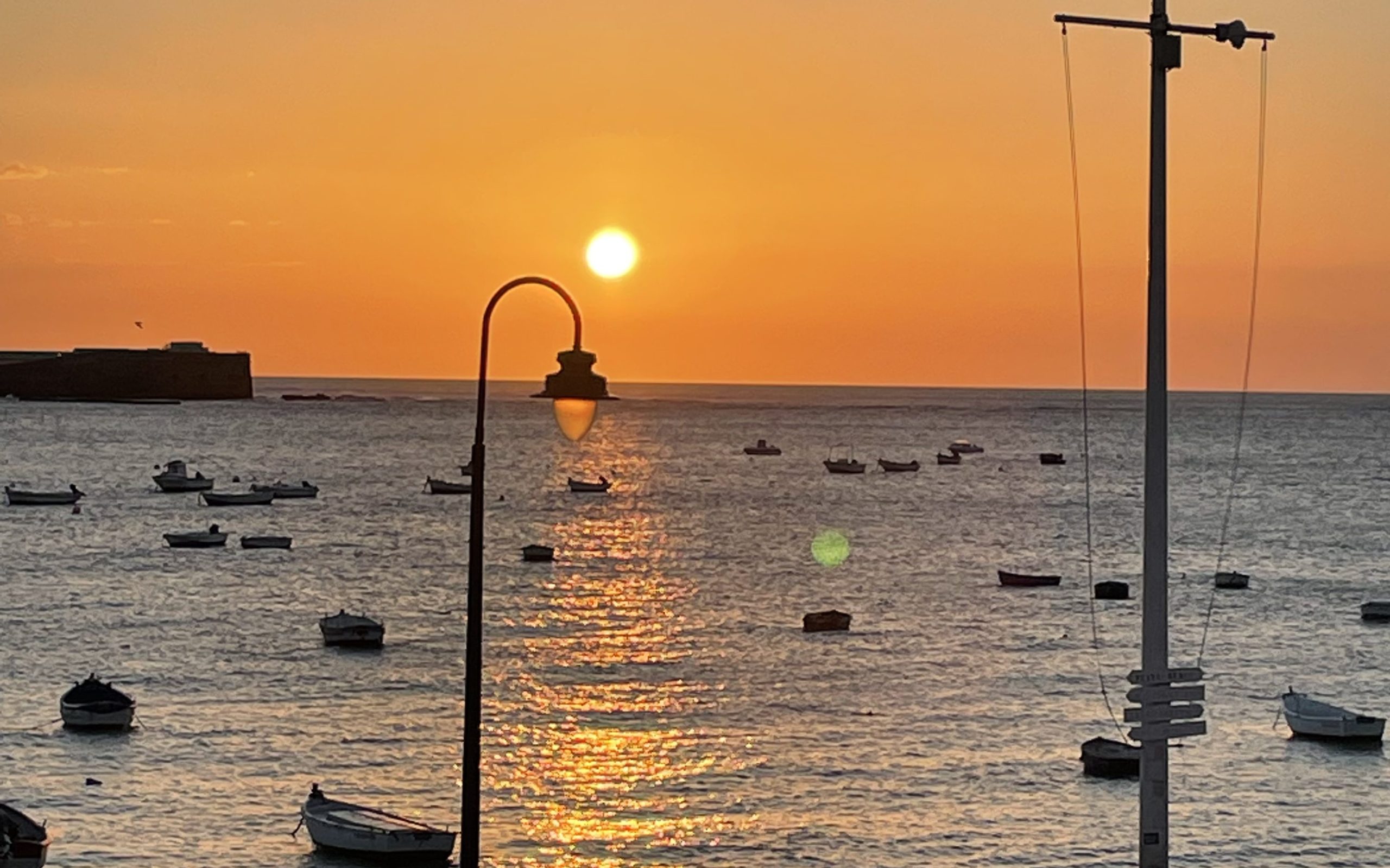Cadiz, pronounced Cad-ith, is more of a feeling than a place. Purported to be one of the oldest cities in Europe, you can approach it by sea across the Bay of Cadiz, or by train or car along the spit peninsula, where it sits at the tip like a huge maze of narrow cobbled streets. Only the perimeter allows cars, bikes and scooters, the main streets are all pedestrianised, which helps you to look all around and above when exploring. We left our camper ’on the mainland’ and stayed in a hotel for three nights; a converted palace dating back to 1647, where the Duke of Wellington subsequently stayed in 1812. More about this below.
There are few tourists in Cadiz in February, it’s not an easy place to get to with the nearest international airport in winter some 80 miles away in Seville (flights to Jerez start after Easter). So the small city is filled with locals and Spanish travellers giving us a chance to try our Spanish, see video of Mike below.
The delightful atmosphere of Cadiz meant we walked every street, through every public garden, along the beach, and sat outside in the sunshine at a cafe in every square, spent a lot of time people watching, and tried some new tapas dishes accompanied by crisp white wines.
The main sites included the cathedral, its bell tower, the museum and the Roman theatre, but in Cadiz it’s really best to just wander the narrow streets and alleyways, turning at ‘crossroads’ in the direction most appealing to the senses, stopping at bars and cafes as your feet start to protest, and your taste buds yearn for a new experience.
In the 18th century, Cadiz became a fortified town in order to resist the repeated naval attacks perpetrated by the English. It was during this period that Cadiz enjoyed its most fruitful economic growth, monopolizing trade with the Americas. Cadiz resisted the Napoleonic invasion during the Peninsula War 1810-1812 from behind its ancient walls, when Wellington and his army lead the Spanish guerillas, and it was from Cadiz that Napolean’s army was fought until they retreated back to France. So it could be argued that if it wasn’t for Cadiz, Spain would be part of France.
